In the last couple years, agriculture here in the Yakima Valley has seen a new crop popping up, typically behind closed doors or a tall fence. Like it or not, voters in 2012 cast their ballot in favor of legalizing marijuana in Washington state, and since then it has been increasingly more visible around us. Retailers aren’t shy about signage to hawk their wares. Websites will tell you the difference between Indica and Sativa, which varieties belong to what group, and where you can find them. It’s a changing world out there, where weed and its derivatives have an ever-growing foothold in the marketplace. While the taboo elements of alcohol have become commonplace, for many, cannabis’ newly legitimized status is still something to get used to for a public that is more accustomed to its former position on the down-low. That being said, Aileen, Shelley and I had the opportunity recently to visit a marijuana grower in Prosser, and it was a bit surreal.
Under a bright blue sky behind a high fence laced with barbed wire, we walk through Fireweed Farms, an organic marijuana farm, led by owner Randy Williams. Right off the bat, it is startling to see how big the plants are. Holy cow! This is marijuana! They tower overhead, bushy and huge. Wide-webbed netting covers the rows to prevent the heavy bud-ends from too much splay.
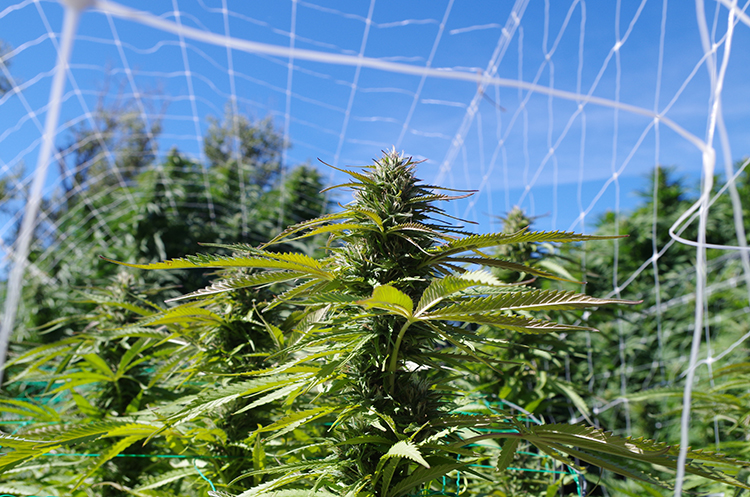 Peeking underneath, we see large, trunk-like stems supporting this massive growth. Having them in the ground with amended soil bought from a local nursery, the roots are able to spread out, and the plant responds with incredible growth. In addition to the special soil, he fertigates as well with organic fertilizers. As if to drive the point home, there were some potted plants of the same age sitting nearby and they were about a quarter of the size as their counterparts in the earth. He says that on May 1, they were all 6 inches tall, now those planted in the rows are around 12 feet. Not bad for an annual.
Peeking underneath, we see large, trunk-like stems supporting this massive growth. Having them in the ground with amended soil bought from a local nursery, the roots are able to spread out, and the plant responds with incredible growth. In addition to the special soil, he fertigates as well with organic fertilizers. As if to drive the point home, there were some potted plants of the same age sitting nearby and they were about a quarter of the size as their counterparts in the earth. He says that on May 1, they were all 6 inches tall, now those planted in the rows are around 12 feet. Not bad for an annual.
As we walk, leaves litter the ground here and there where workers pull them off as Randy explains that removing these bull leaves helps to let the light in, as the large leaves create a lot of shade. He ushers us over the leaves and into an indoor area where he nurtures his baby clones for the yearly crop.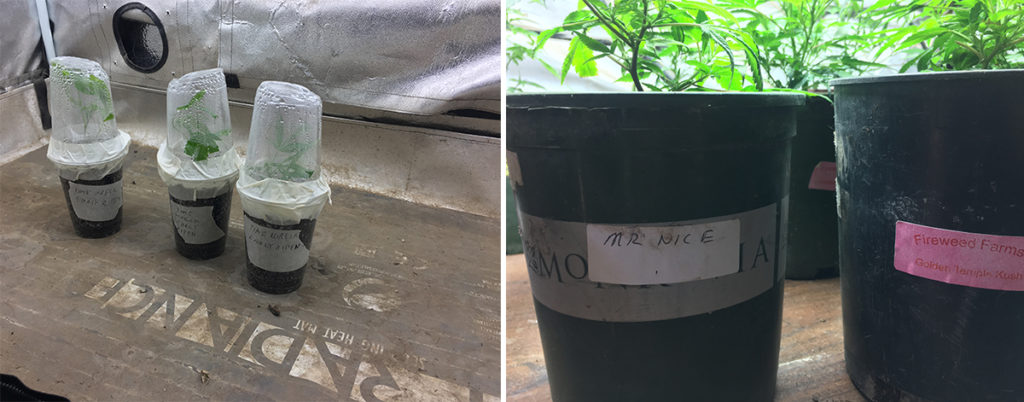
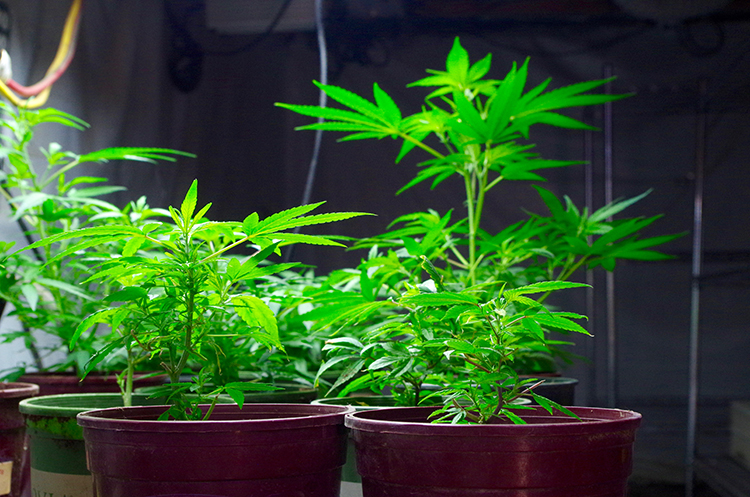
It is largely empty now nearing the end of the season, but come next spring, it will be filled and ready for planting. He uses clones to preserve the current strains he raises. He even developed his own plant called the Blueberry Purple Kush, a Sativa variety he is very proud of. 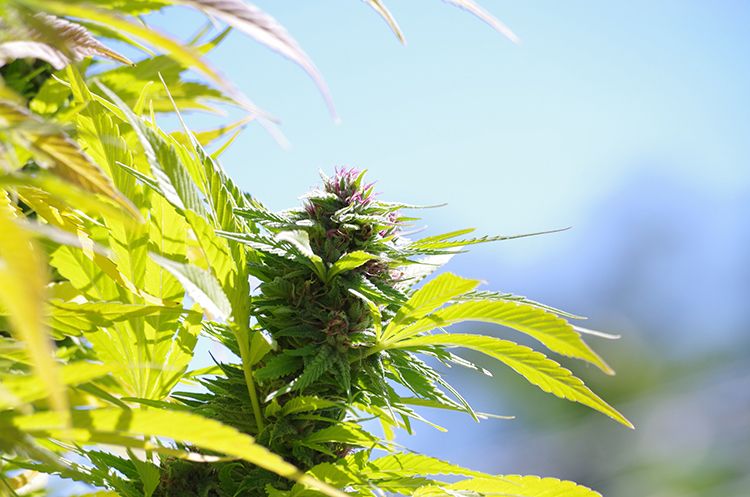 He grows 10 varieties in all: Fireweed, his farm namesake, Blue Dream, Dutch Treat, Girl Scout Cookie, Golden Temple Kush, Mr. Nice, Time Wreck, Hawaiian Mandarin, and the cannabidiol (CBD) variety Sour Tsunami. CBD is a component in cannabis similar to THC. CBD varieties have many medicinal qualities and work without making the user feel “stoney.” All of these varieties are selected in the true entrepreneurial spirit of what will sell.
He grows 10 varieties in all: Fireweed, his farm namesake, Blue Dream, Dutch Treat, Girl Scout Cookie, Golden Temple Kush, Mr. Nice, Time Wreck, Hawaiian Mandarin, and the cannabidiol (CBD) variety Sour Tsunami. CBD is a component in cannabis similar to THC. CBD varieties have many medicinal qualities and work without making the user feel “stoney.” All of these varieties are selected in the true entrepreneurial spirit of what will sell.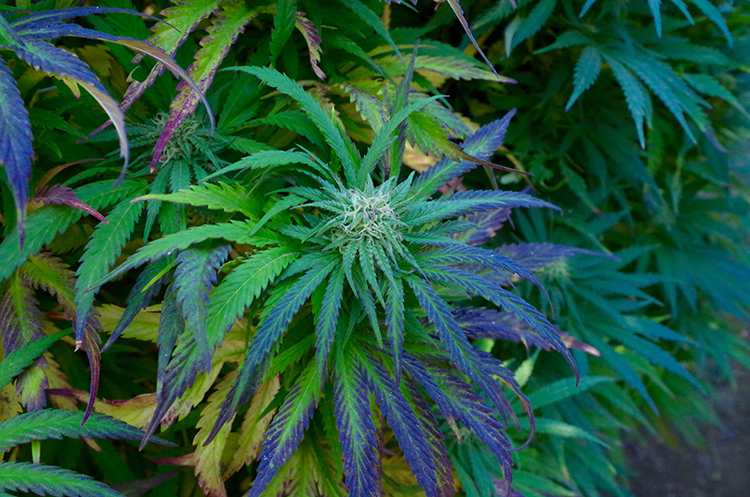
Currently on the eve of his third harvest, he was the first person in the Yakima Valley to become a licensed grower. Picking is slated to begin on October 10th, and Randy is ready. It will take 20 people 10 days to get it all. After cutting the long stems off the plant, the large leaves are removed and the flower buds are separated off, washed, and dried for 5 to 7 days. Making up 140,000 gram sized packages will take about four months. Everything is sent to a lab and tested for impurities before being released to market, so it is in the farmers’ best interest to create the highest quality product he can produce.
Walking the rows on our way out, we bend down to smell the bud tips like roses. Each variety is so different. Of course there’s the dank, skunky smell most associated with cannabis, but there are also citrus and floral notes as well which is pleasantly surprising. They really are beautiful plants. Randy takes a tremendous amount of joy and satisfaction from what he does. The controversy will rage on, to be sure, but in this little corner of the Valley, they’re just farming. Preparing for the long hours of harvest and thinking about spring planting for the coming year.










Very cool article. Makes sense that this would eventually be something to write about. I would be curious to see more about what is done with the product. I’m NOT a fan of marijuana in its recreational form, but I know there’s more to the plant than a high. What about the hemp…what goes on from harvest to sell!?
Are any clones for sale . I grow three or 4 plants at home.?